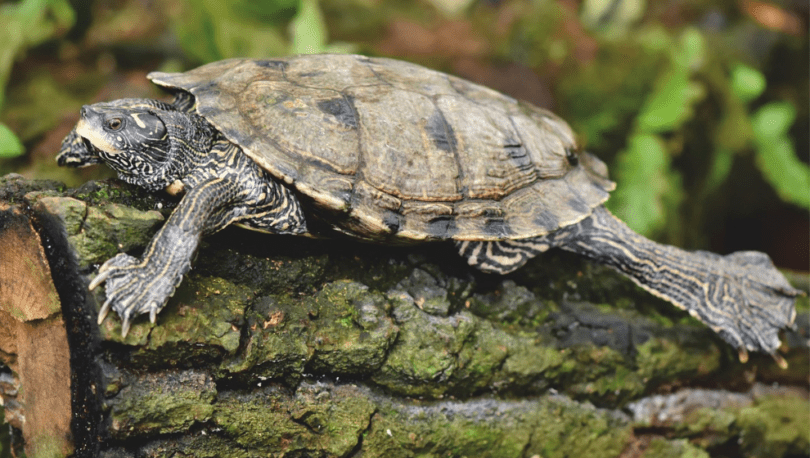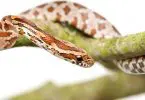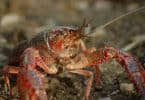Many stories are prevailing that turtles and tortoises have outlived human beings and other animals. The Guinness World Record has referred to a giant tortoise as the world’s oldest animal on earth. This creature was alive for 187 years. A variety of turtle, box turtle, has been known to survive for a century by ecologists. The average lifespan of healthy turtles and tortoises is around 60 to 80 years. Sea turtles, large species, are expected to thrive for 80-100 years. Those young turtles that are brought up with great care by their young ones are likely to live for more years.
It’s difficult to quantify a life that spans centuries, especially when you consider that people are lucky if they get a chance to be 100 years old. Scientists haven’t been tracking turtle and tortoise ages for long enough to have precise records of the longest-lived individuals. If we started with a turtle that just hatched today, it could take three, four, or five generations of scientists to trace it to the end.
We’ll go through the details of how and why tortoises and turtles live so long in the sections below. Knowing this knowledge can assist you in ensuring that your pet tortoise or turtle should get everything they require to accompany you throughout your life. I will also give you some pointers on how to make sure your tortoises and turtles.
Table of Contents
What Is Making A Turtle Live So Long?
Different turtles have different mechanisms to stay alive for many years. Some only focus on protecting themselves from predators and staying longer. In contrast, some reproduce several times and pass their features to the next generation. The greater lifespan of turtles depends on many theories and factors explained by scientists. I will discuss each aspect in detail.
Strong Shells
After coming into the world, the very first mechanism that turtles have is their strong shells. Their shells have thick armored skin. The increased hardness of shells increases their chances of self-defense.
The baby turtles, after birth, are more prone to predator attack as they do not have fully developed shells. But during breeding time, tortoises and turtles move to places having few predators. Their babies cannot fall prey easily like the young ones of other animals. This evolutionary feature helps them against predators and thus increases their lifespan.
Reproduction
For turtles, processes are slow, unlike other animals. They have a slow pace of growth. They gain sexual maturity after many years of living. As soon as turtles gain a reproduction sense, they divert their attention towards this matter. Sometimes, they reproduce multiple times in a year. They produce a large number of offspring. In this way, the world will not run out of turtles.
Stress-Free Life
The large lifespan of turtles is also attributed to their stress-free life. They enjoy a peaceful life. They float around in the ocean waters, minding their own business and not engaging in hunting other species. They don’t seek out challenges in the wild, stay out of trouble, and enjoy a stress-free existence.
Healthy Diet
They eat a strict vegetarian diet which consists of greens and other healthy substances. It seems they realize the importance of a healthy diet. Eating such a diet helps to strengthen their immune system and protect them from diseases.
Slow Metabolism
One theory revolves around the fact that turtles are cold-blooded and have a slow metabolism, as defined by biologists. They don’t need to eat as much food to thrive because they utilize food-derived energy very slowly. They don’t need to expend a lot of energy to keep warm because they are cold-blooded. Whenever they face harsh conditions, they can survive for long without food and water.
Our bodies require energy to function properly. Our bodies use chemical reactions to convert food into energy that we can use. However, this chemical activity can occasionally produce additional chemicals that damage our tissues and cells over time. We observe symptoms of age, such as wrinkles, when this happens.
When we investigate animals with a slow metabolism, we see that their tissues and cells aren’t damaged as much as would be predicted for their age and size.
Energy Utilization
Turtles have a slow mechanism for converting their food to energy. In this way, they grow very slowly, and their cells are not damaged easily. Turtles and tortoises remain dormant during the season. They bury themselves under the mud or remain underwater in lakes and ponds. Most of the body functions of turtles come to a halt during hibernation, which slows down the aging process. In this period, a least of their energy is utilized.
Delayed Telomere Shortening
Telomeres are structures that protect the end of chromosomes in a cell. They are non-coding DNA strands. After a while, telomeres start to shorten or degrade in living creatures. After degradation, DNA replication is reduced. It can lead to cell death and tumor occurrence.
But tortoises and turtles have a mechanism of delayed telomere shortening. They are protected from tumors and cell death for a long time. In this way, they live for a longer period.
Apoptosis
In case of cell damage, they kill their deceased cells without releasing harmful substances. It is called apoptosis. Nearby cells are also protected from damage. They do not undergo long-term effects of cell damage. Such controlled cell death helps them to avoid diseases like cancer.
Environmental Conditions
The environment in which an animal grows is also a key determinant for its lifespan. The species of tortoises and turtles that are used to living in harsh conditions are adapted to combat problems of such an environment. This will also put a hold on breeding. They might have to wait for ideal breeding conditions to emerge, such as the proper weather, temperature, and moisture.
How To Increase The Lifespan Of Your Turtle?
Your pet turtle may even outlive you with proper care, food, and environmental conditions. Here are some things you can do to ensure that your turtle lives a long and happy life.
- Turtles cannot maintain their body temperature by themselves. During winter, place a heater near their tank to maintain a temperature between 75 to 80 degrees.
- Help pet turtles to stay in sunlight for some time so that they gain Vitamin D.
- Line the turtle’s tank floor with mud and rock, so they enjoy digging in the mud.
- For aquatic turtles, fill the tank with filtered water and clean it at regular intervals.
- The quality and quantity of food that you feed your turtles should be appropriate.
- In case of any illness, monitor them closely. Handle them with great care.
Conclusion:
You see, the turtles have really long lives. This also calls for a pinky promise to care for a turtle for your whole life once you bring one at home. However, these long-living creatures can also die too early if you don’t care properly. No doubt, turtles are low-maintenance pets, but you have to make sure they are getting the basic necessities.
I hope I answered one of the most commonly asked questions by turtle owners. In case you want me to talk about anything particular, do let me know. I would love to share my two decades of knowledge and experience with amphibians and reptiles.








